News
2016
-
Budapest 2.0: The international collaboration demonstrating ATM developments with live traffic has been completed Budapest 2.0, a project with international collaboration has demonstrated the benefits of three technological innovations co-financed by SESAR, the organisation setting the directions for the development of air traffic management in Europe, through real flights. The program has demonstrated the capabilities of solutions supporting continuous descent, the benefits of satellite-based arrival procedures, and the applicability of remote tower control in the vicinity of Budapest Ferenc Liszt International Airport. These demonstrations were evaluated during a professional workshop held in the middle of November at HungaroControl's headquarters. The total budget of the project is nearly EUR 2.5 million, 50 percent of which has been funded by SESAR Joint Undertaking.
-
CANSO Global ATM Safety conference in Budapest a great success CANSO's (Civil Air Navigation Services Organisation) global air traffic management safety conference was held on 6-11 November in Budapest, with HungaroControl hosting the event.
-
Summer Season Ends in October for HungaroControl Air traffic in the Hungarian airspace grew by 2 to 3% monthly in the peak summer months. This increase is significant considering that the drastic, 20% traffic increase in the past two years has by now become integrated into the traffic handled by HungaroControl. Hungarian air traffic controllers handle this unique situation without any significant delays. In air traffic control, summer season ends at the end of October and the size of traffic is close to double the traffic in the winter season.
-
First EGNOS-based Approaches Implemented in Hungary The European Satellite Services Provider (ESSP) announces that on 15th September, the first EGNOS-based approaches implemented in Hungarian territory became effective at Budapest Airport. The publication of these procedures has been possible thanks to the work performed in the framework of Budapest 2.0 project, funded by SESAR Joint Undertaking .
-
The European Commission recommends Hungarian ATM development projects for funding The European Commission recommends two Air Traffic Management (ATM) development projects – elaborated by HungaroControl’s experts – for funding. One project aims to extend Free Route Airspace (FRA) across European borders, the other aims to support the safe and efficient flow of aircraft arriving at Vienna airport while in the Hungarian airspace. HungaroControl submitted its proposals with the professional support of the Ministry of National Development. The total budget for the two projects amounts to EUR 3.1 million, 85% of which (more than EUR 2.6 million) is co-financed by the European Union’s Connecting Europe Facility (CEF).
-
Atos, HungaroControl and FREQUENTIS to support SESAR 2020 Nineteen members will participate in the industrial research, validation and demonstration activities of SESAR 2020, including the Frequentis SESAR partners consortium (consisting of Atos, HungaroControl and Frequentis). This consortium will enhance cross-industry innovation through integrating different stakeholders in the ATM value chain. Remote tower, virtualised centres and information management are key topics to be worked on.
-
New Functionality for HungaroControl’s ATS System Test operations for the A-CDM (Airport-Collaborative Decision Making) functionality upgrade to HungaroControl’s air navigation software are nearly completed. The objective of the project (co-financed from EU funds) is to establish a procedure that ensures timely information for air traffic controllers, the airport, airlines and ground handling companies to enable accurate planning.
-
2015: Record Traffic in the Hungarian Airspace 2015 proved to be a record year: for the first time in HungaroControl’s history, the number of aircraft handled in Hungary’s airspace exceeded 700,000 (755,418 exactly). The nearly 12% traffic increase meant more than a month’s additional work for air traffic controllers. With the more than 67,000 aircraft in the upper airspace over Kosovo, Hungarian air traffic controllers guaranteed safety for more than 820,000 flights in 2015.
-
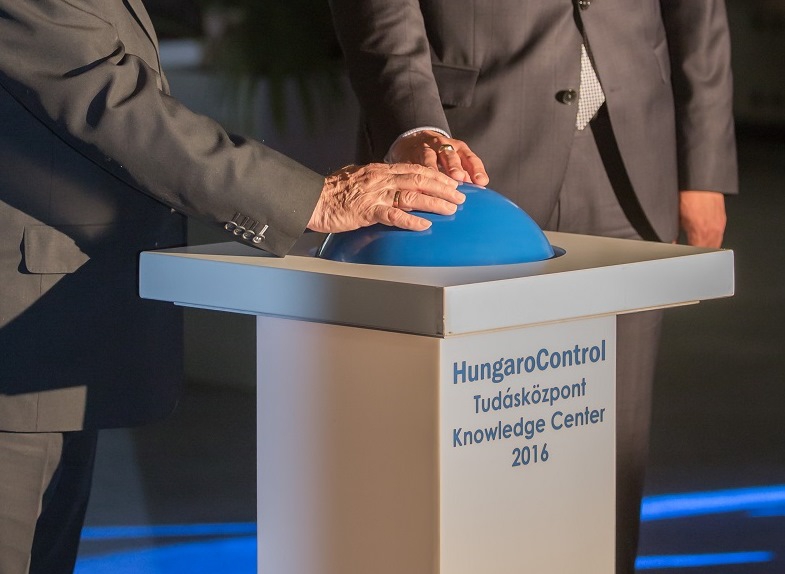
Innovation, R&D and ATM Academy – New Integrated Knowledge Centre Advances HungaroControl’s Market Position The increase in air traffic and the transformation of the European air navigation market call for the development and testing of innovative procedures and new concepts as well as the continuous professional training of air traffic controllers. Taking advantage of the synergies of units that previously operated separately, the now inaugurated Knowledge Centre supports the market position of the company by offering integrated services to other players in the industry. Central and Eastern Europe's most modern Knowledge Centre is home to EPC (Entry Point Central air navigation academy), CRDS (HungaroControl’s Centre of Research, Development and Simulation) and the radar simulation and contingency centre.
-
SEAFRA Real-Time Simulation at HungaroControl’s CRDS Air Traffic Controllers and ATM experts from CCL (Croatia Control) , SMATSA (Serbia and Montenegro Air Traffic Services) and BHANSA (Bosnia and Herzegovina Air Navigation Services Agency) successfully conducted the SEAFRA (South-East Axis Free Route Airspace) Real-Time Simulation between 16th and 25th March, 2016 at HungaroControl’s CRDS (Centre of Research, Development and Simulation) .
-
HungaroControl: New partnership and Success at the World ATM Congress, Madrid HungaroControl's pioneering remote Tower concept with its advanced implementation plan achieved massive interest. A trilateral collaboration between HungaroControl, Thales and Searidge was formed at the World ATM Congress (WAC) which is based upon a shared, compelling vision for a robust and flexible remote tower solution. HungaroControl’s participation at WAC held in Madrid from 8-10 March was a definite success especially the remote tower concept presented by Gyula Hangyál, ATM director. The company aims to operate a remote contingency tower in Budapest in 2017 and a full-time remote tower as of 2018. The Budapest airport will be the world’s first remotely controlled airport of its size and complexity, with nearly 100,000 movements per year. HungaroControl’s simulation centre (CRDS) suitable for the validation of new technologies: the Free Route Airspace, CPDLC, PBN, the MergeStrip tool met with considerable interest from the professional audience.
-
CEF Grant Agreement signed for FAB CE’s Free Route Airspace from the Black Forest to the Black Sea study The Grant Agreement for FAB CE ’s Free Route Airspace from the Black Forest to the Black Sea study was signed on 27 November, 2015. The study is co-financed by Connecting Europe Facility (CEF) with over one million euros of co-financing and will be managed by SESAR Deployment Manager. The project was selected for funding under the SESAR priority of the 2014 CEF Transport calls, which made 13 billion euros available to finance projects to improve European transport infrastructure, promote transport safety, develop intelligent transport systems and mitigate the environmental impact of the sector. The study contributes to the deployment of Flexible Airspace Management and Free Route, one of the six ATM functionalities identified in the Pilot Common Project (Regulation (EU) No 716/2014).
-
HungaroControl Celebrates 100th Anniversary of Air Traffic Control in Hungary HungaroControl Hungarian Air Navigation Services celebrated the centenary of Hungarian air traffic control by giving professional awards for the development of Hungarian air navigation services as well as supporting civil organisations. The reception on the occasion of the centenary was held on 12 February, 2016 in Budapest and was opened by Dr Anita Boros, Deputy State Secretary of the Ministry of National Development responsible for asset management. Following the speech by Mr Kornél Szepessy, CEO of HungaroControl, the HungaroControl Partner Award was given to Mr Hannu Juurakko ATM Director of Frequentis AG; the HungaroControl Best Business Partner Award to Mr Roy Langridge, Director of Mileridge Ltd.; and the HungaroControl Best Customer Award to Mr Gábor Horváth, Country Manager Hungary, Emirates Airline.
-
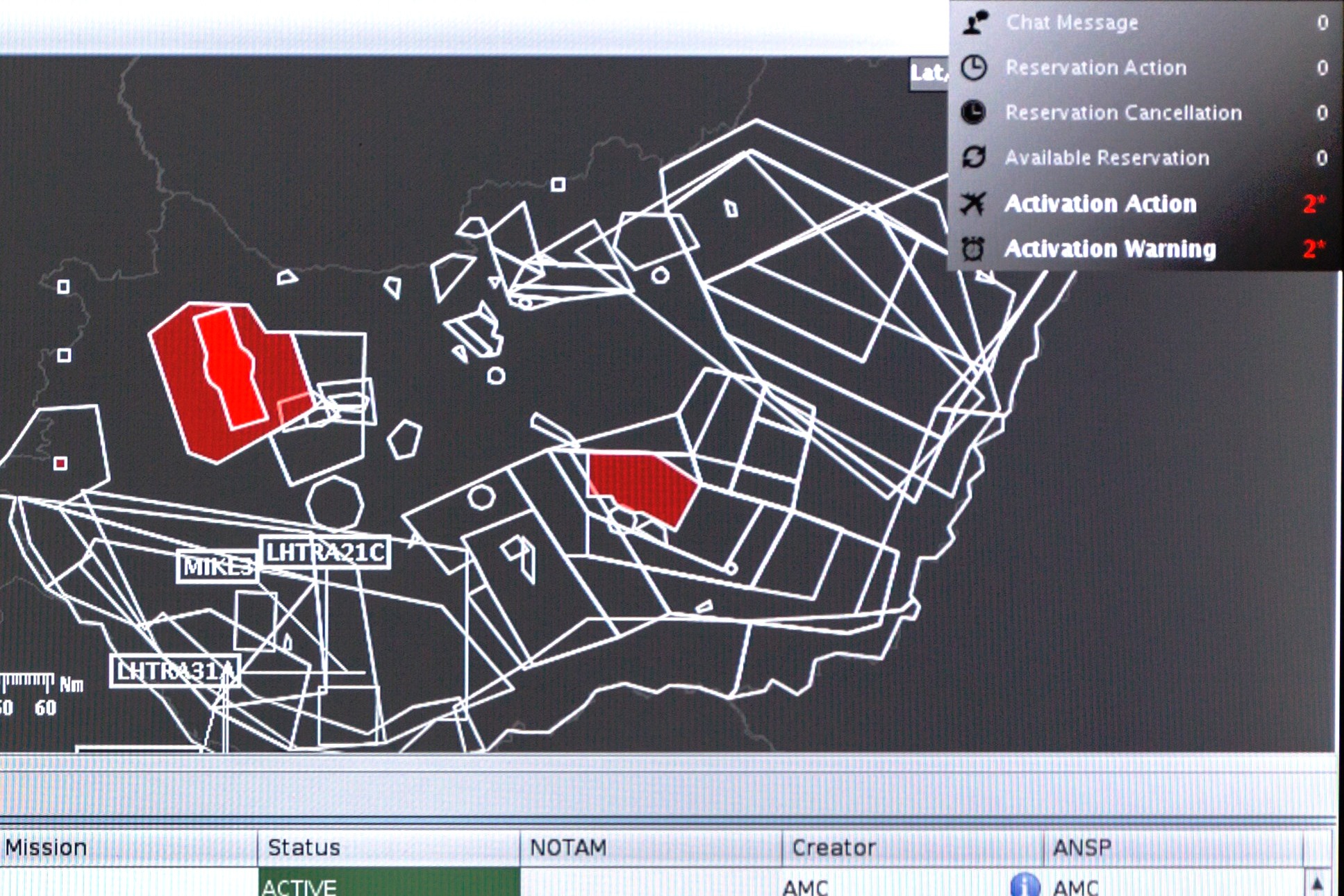
HungaroControl makes online airspace reservation system operational Since January, 2016 a new online system, LARA (Local and Sub-Regional Airspace Management Support System) supports airspace management activities at HungaroControl. The software package is meant to simplify and accelerate the process of airspace reservation requests, approvals and usage, as well as assisting airspace management on a European level. By introducing the LARA software (provided by EUROCONTROL at no cost) at the beginning of 2016, HungaroControl has fulfilled its obligation nearly a year ahead of the deadline.
2015
-
HungaroControl and Wizz Air Sign Cooperation Agreement On 14 December 2015, Tamás Zsolnay, Director of Development and External Relations, and Gyula Hangyál, ATM Director of HungaroControl Magyar Légiforgalmi Szolgálat Zrt. signed a cooperation agreement together with Diederik Pen, Chief Operations Officer of Wizz Air Hungary Kft. The agreement defines the frameworks of the cooperation covering five areas, including flight safety, operations and operations planning, research and development, education and training, as well as service quality and customer satisfaction.
-
New Plannable DCT Routes across Several FABs 47 new plannable direct routes (DCT) came into operation in continental Europe, covering the northwest-southeast axis between the United Kingdom and Hungary. In February 2016, more DCTs will be added that stretch through the UK to the Eastern borders of Ireland.
-
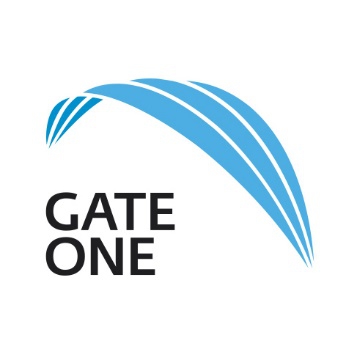
GATE One Agreed to Play an Active Role for Future Inter-FAB Cooperation The members of the GATE One (GO) initiative, which is one of the largest regional ANSP platforms in Europe, agreed to play a more active role to explore potential for future inter-FAB cooperation.
-
HungaroControl Introduces CPDLC A new communication channel, CPDLC (Controller Pilot Data Link Communication) ensures a digital connection between air traffic controllers and pilots in the Hungarian airspace. As one of its major technology development projects, HungaroControl upgraded MATIAS (Magyar Automated and Integrated Air Traffic Control System), its state-of-the-art air navigation system. As part of this upgrade, the CPDLC feature went live at the end of November 2015, following nearly six months of testing, approximately three years ahead of the deadline set by the European Union.
-
HungaroControl Showcased Its Innovative Technologies in Dubai HungaroControl’s participation at the ATC Global held in Dubai was a definite success. Its simulation centre suitable for the validation of new technologies (CRDS) , its remote tower technology (rTWR), and the digital messaging solution between pilots and controllers (CPDLC) met with considerable interest from the professional audience from Dubai, the Middle and the Far East after a similar reception in Madrid in March.
-
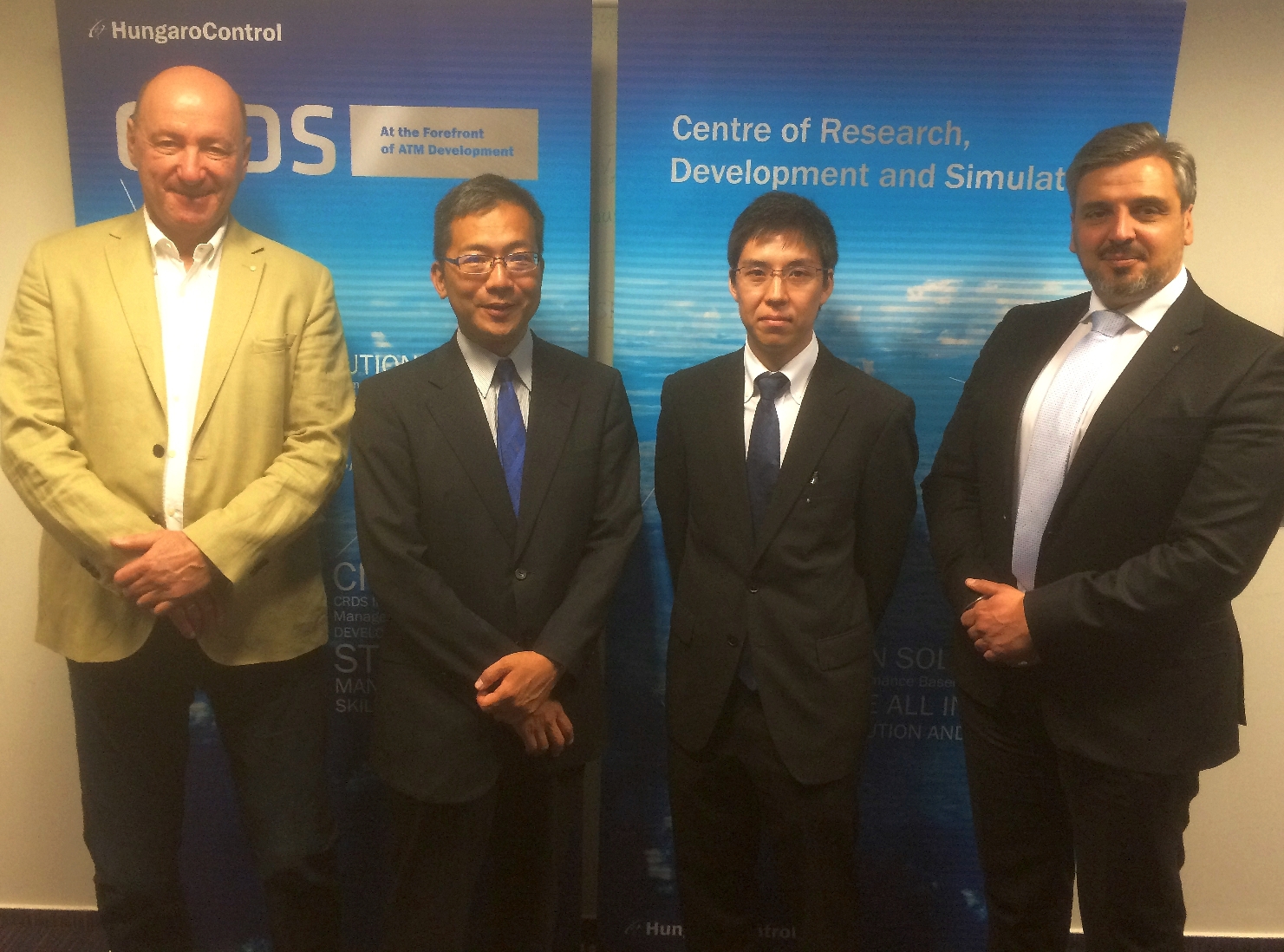
Researchers from ENRI study Free Route Airspace operations at CRDS The Japanese Electronic Navigation Research Institue (ENRI) has begun a new airspace sectorisation project to introduce Free Route Airspace (FRA) in Japan. The institute's two researchers studied the necessary processes for the implementation - through the already operating traffic organisation concept in the Hungarian airspace - in HungaroControl’s own research-development and simulation centre ( Centre of Research, Development and Simulation, CRDS ).
-
ICAO Air Traffic Management Group East (ATMGE) Conference and ATM 2020 Symposium ICAO (International Civil Aviation Organization) held its scheduled meeting known as the Air Traffic Management Group East (ATMGE) conference, followed by the ATM 2020 symposium, dedicated to the future of air traffic control, in Budapest on 14-18 September 2015. Representatives of twenty-three countries and six international organisations visited the Hungarian capital city to discuss the current aviation issues, visit the Hungarian air navigation service provider and CRDS, the Centre of Research, Development and Simulation of HungaroControl. The conference was hosted by ICAO, the Hungarian Aviation Authority and HungaroControl.
-
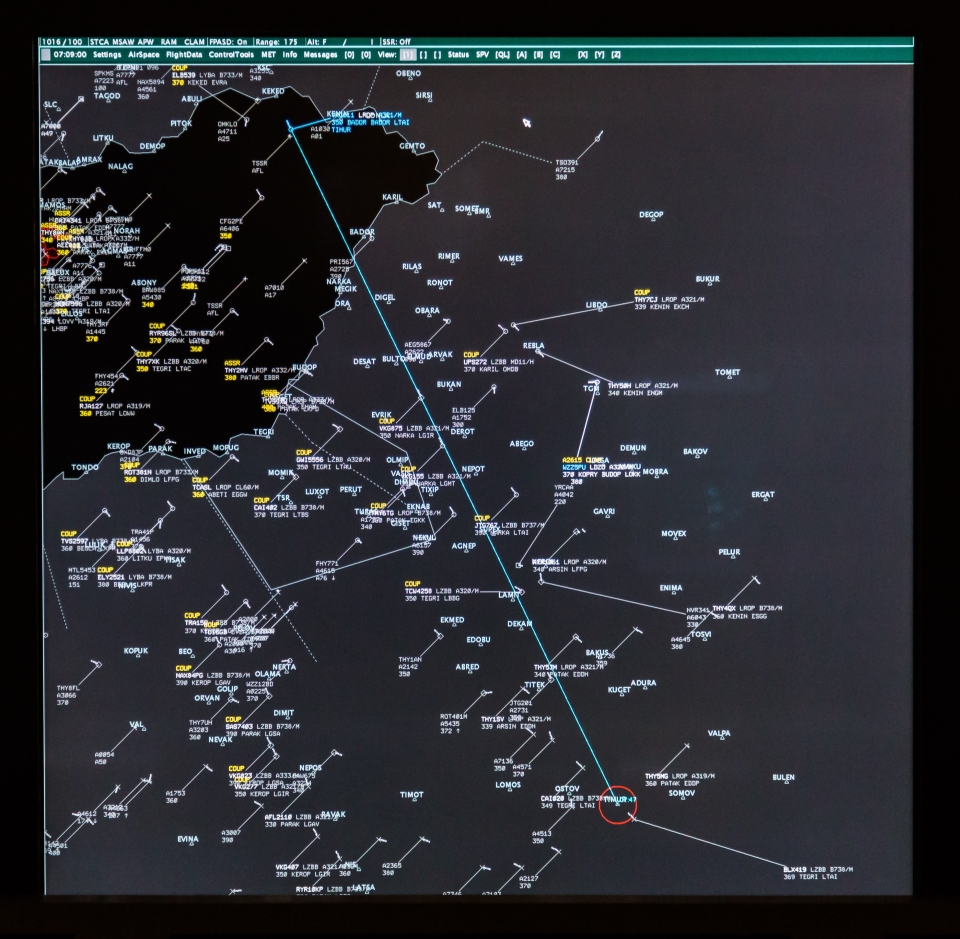
N-FRAB: common airspace above Hungary and Romania For the first time in Central Europe aircraft can now plan their flying routes freely even across the borders of the two countries. Since 20 August 2015 HungaroControl, the Hungarian and ROMATSA, the Romanian air navigation service providers have been jointly operating the airspace of the two countries based on the new cross-border concept of free use of airspace (Night Free Route Airspace Budapest/ Bucharest - N-FRAB). Thus aircraft can fly on the shortest possible trajectory between the entry and exit points of the airspace of the two countries, without any unnecessary navigation points.
-
HungaroControl: Record Traffic in the Air In July 2015 the air traffic controllers of HungaroControl handled 100,856 aircraft, beating all previously measured records. New traffic records emerged in transit traffic, while the number of flights arriving and departing from Budapest also reached the highest figures since November 2011. On 26 July 2015 the air traffic controllers of the Hungarian control centre handled a record number of 3,644 flights in one day.
-
The European Commission recommends Hungarian ATM development projects for funding The European Commission approved a total of 276 (including two Hungarian ATM-related) projects following the first calls for proposals under the Connecting Europe Facility, published in 2014. The proposals were submitted with the approval of the Ministry for National Development and with the support of HungaroControl’s strategic partner, Tenderauditor Kft. The total budget of the two projects amounts to EUR 3.2 million, 50% of which is co-financed by the European Union through CEF Transport.
-
FAB CE: Important Results During the Hungarian chairmanship of the FAB CE CEO Committee (CEOC) between June 2014 and June 2015 the members of FAB CE established an international company to support the implementation of the functional airspace block programme, and further enhanced InterFAB cooperation. The long-planned reform of the FAB CE programme was launched; and the new Program Manager for the FAB CE Programme was appointed, who also attends to the duties of the joint company’s director. Moreover, the RP 2 performance plan for the 2015-2019 period, a key factor in the FAB CE operation, was successfully finalised.
-
Homebriefing: safer flights for general aviation HungaroControl Hungarian Air Navigation Service’s new, free-of-charge, web-based service offers general aviation pilots faster and simpler preparation for safe flights. The Homebriefing system helps pilots submit flight plans from wherever they may be for flights in the airspace below 2900 metres (9500 feet) to HungaroControl’s Flight Information Centre. The website collects the most important, regularly updated air navigation and meteorological information. Through the use of this system, flight safety and traffic flow control in the uncontrolled airspace can be improved, airspace infringements can be avoided and in the event of an accident the work of search and rescue services will become easier.
-
HungaroControl has contributed to the concept of Dubai contingency remote tower An international team lead by Independent Business Group including experts from HungaroControl has been working on a concept of operations (CONOPS), operational requirements and business case for the use of remote tower technology in order to provide a sustainable and safe contingency solution for the Air Traffic Control tower operation in Dubai Air Navigation Services (DANS) at Dubai International and Al Maktoum International at Dubai World Central. The project also covers an additional feasibility study to assess if remote tower technologies can be used in Dubai in order to ensure contingency sufficient enough to maintain 100 per cent of the actual traffic at these airports.
-
HungaroControl: Air Traffic Hits Record High In 2014 HungaroControl’s air traffic controllers navigated a record high number - nearly 750,000 - of aircraft. The primary reasons behind the outstanding traffic data include the events in Ukraine, and the re-opening of the upper airspace over Kosovo. The Company’s 2014 revenue was HUF 32.11 billion and this figure is expected to exceed HUF 34 billion in 2015.
-
Air Navigation Research and Development Platform Established in Hungary On 8 May 2015, HungaroControl Hungarian Air Navigation Services Pte. Ltd. concluded a Memorandum of Cooperation with eleven higher education institutes and with the Institute for Transport Sciences (KTI) and the Institute of Computer Science and Control of the Hungarian Academy of Sciences (SZTAKI) about the establishment of a Research and Development Platform. The purpose of the cooperation is to explore areas of research, development and innovation closely related to air navigation activities, to coordinate common projects, to support the research work of students and teachers, to support the development of international relations, and to use the benefits of possible EU funding.
-
Co-operation agreement between the Hungarian and the Icelandic air navigation service providers A partnership agreement was signed by HungaroControl Hungarian Air Navigation Services Pte Ltd. and Isavia, the Icelandic air navigation service provider on March 10, 2015 during the World ATM Congress 2015 exhibition in Madrid. The agreement will coordinate the future research and development (R&D) activities of the two organisations and the joint utilisation of their resources and expertise. This co-operation will provide an appropriate background, in accordance with the requirements of the Single European Sky (SES) programme, to their joint participation in the research and development programs of the EU.


